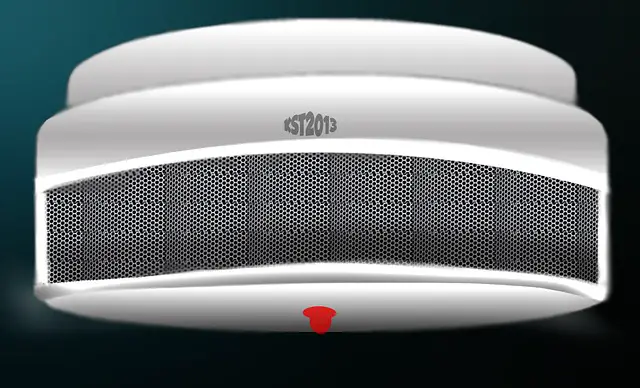As a property owner or manager, it is important to ensure the safety of the occupants in your commercial building. One key aspect of building safety is the installation of smoke detectors, which can help alert occupants to potential fires and save lives. In this article, we will explore the best practices for where to install smoke detectors in commercial buildings. So let us find out some of the best places where we can install smoke detectors in commercial buildings.
Building Layout Considerations
The layout of your building can play a significant role in determining where to place smoke detectors. In general, it is recommended to have at least one smoke detector in each room or area of the building. This includes offices, restrooms, break rooms, lobbies, and other common spaces.
In addition, it is important to place smoke detectors in high-risk areas, such as near kitchens or areas with electrical equipment. These areas are more likely to experience fires and should be monitored closely.
High-Traffic Areas
High-traffic areas are another important consideration for smoke detector placement. These areas, such as hallways and stairwells, are often the primary means of egress for building occupants in the event of a fire. Placing smoke detectors in these areas can help ensure that occupants are alerted to a fire and can safely evacuate the building.
Office Buildings
In office buildings, it is recommended to place smoke detectors in each office, as well as in common areas such as hallways and break rooms. Additionally, smoke detectors should be placed near electrical equipment and in areas where smoking is allowed.
Retail Spaces
Retail spaces should have smoke detectors installed throughout the sales floor, storage areas, and break rooms. It is also important to place smoke detectors near electrical equipment and heating systems.
Healthcare Facilities
Smoke detector placement in healthcare facilities should be tailored to the specific needs of the facility. In general, smoke detectors should be installed in patient rooms, common areas, and storage areas. It is also important to place smoke detectors near areas with medical gases, as these can increase the risk of fire.
Educational Institutions
In educational institutions, smoke detectors should be installed in each classroom, as well as in common areas such as hallways and gymnasiums. It is also important to place smoke detectors near kitchens and other areas where food is prepared.
Restaurants and Food Service Establishments
Restaurants and other food service establishments should have smoke detectors installed in each dining area, as well as in kitchens and storage areas. It is also important to place smoke detectors near cooking equipment and grease traps.
Hotels and Hospitality Venues
Hotels and hospitality venues should have smoke detectors installed in each guest room, as well as in common areas such as lobbies and hallways. It is also important to place smoke detectors near kitchens and laundry rooms.
Industrial and Manufacturing Facilities
In industrial and manufacturing facilities, smoke detectors should be installed in each production area, as well as in common areas such as break rooms and storage areas. It is also important to place smoke detectors near electrical equipment and heating systems.
Parking Structures
Smoke detectors in parking structures should be installed throughout the structure, with a focus on areas near the entrances and exits. It is also important to place smoke detectors near areas with electrical equipment and in any enclosed stairwells.
Warehouses and Distribution Centers
Smoke detectors in warehouses and distribution centers should be installed throughout the facility, with a focus on areas with high ceilings and large open spaces. It is also important to place smoke detectors near loading docks and electrical equipment.
Data Centers and Technology Facilities
Data centers and other technology facilities should have smoke detectors installed throughout the facility, with a focus on areas with large amounts of electrical equipment and servers. It is also important to place smoke detectors near any areas with backup power supplies, such as generators.
High-Rise Buildings
In high-rise buildings, smoke detectors should be installed on every floor, with a focus on areas near elevators and stairwells. It is also important to place smoke detectors near areas with electrical equipment and in any enclosed stairwells.
Mixed-Use Buildings
Mixed-use buildings, which combine residential and commercial spaces, should have smoke detectors installed throughout the building. This includes common areas, such as hallways and lobbies, as well as in each residential and commercial space.
Transportation Facilities
Transportation facilities, such as airports and train stations, should have smoke detectors installed throughout the facility, with a focus on areas with large crowds and high traffic. It is also important to place smoke detectors near any areas with electrical equipment or where flammable materials are present.
Entertainment Venues
Entertainment venues, such as concert halls and theaters, should have smoke detectors installed throughout the building, with a focus on areas where large crowds gather, such as seating areas and lobbies.
In conclusion, determining where to install smoke detectors in commercial buildings is a crucial aspect of building safety. Proper placement can help detect smoke and fire early on, potentially saving lives and minimizing property damage. By carefully considering the layout and unique needs of your building, you can determine the best locations for smoke detector placement.
Whether you manage an office building, hospital, warehouse, or any other type of commercial building, it is important to prioritize the installation of smoke detectors throughout the building. Remember, the safety of your building and its occupants should always be the top priority.
For more information on home safety and security, you can visit Understanding the Basics of Alarm Systems and Modern Innovations in Home Surveillance.

